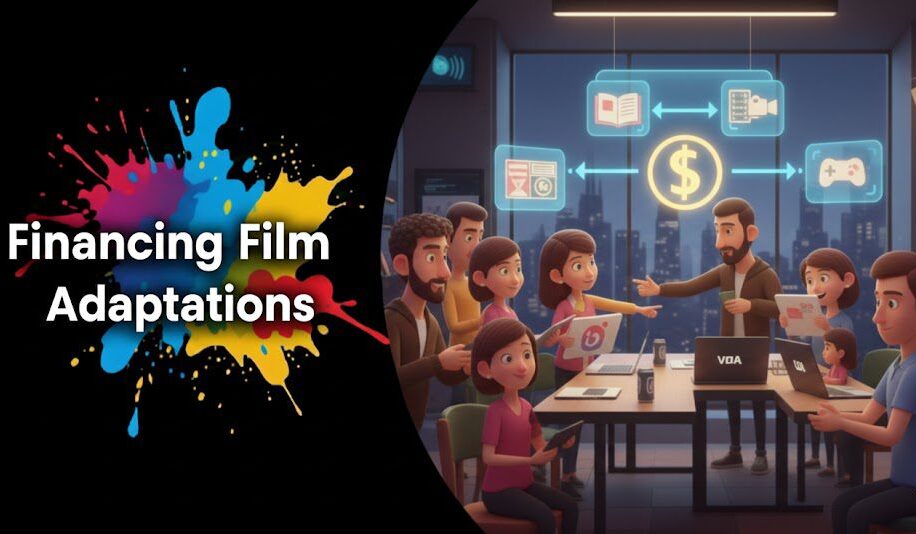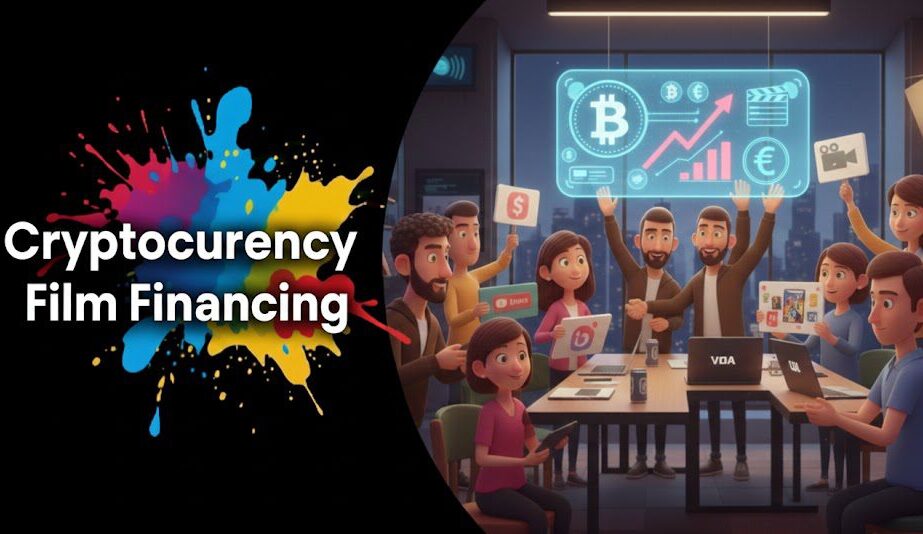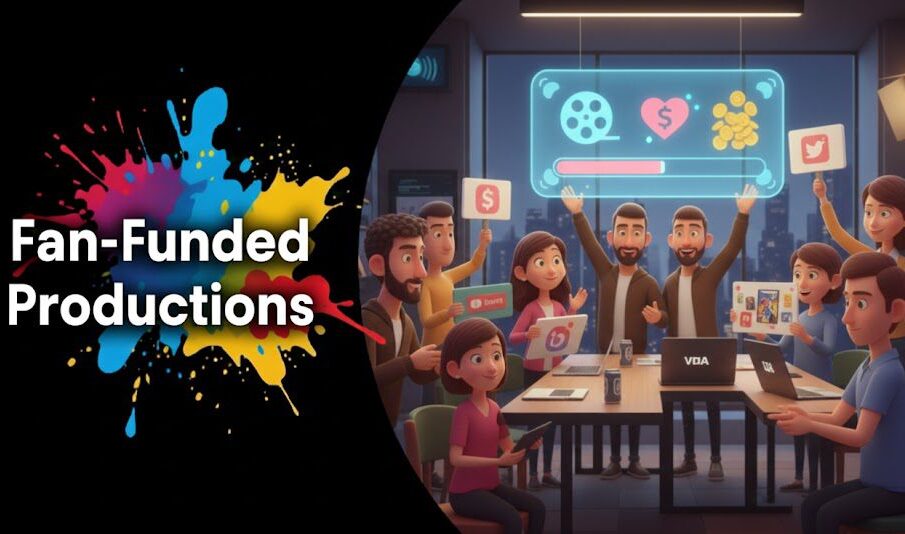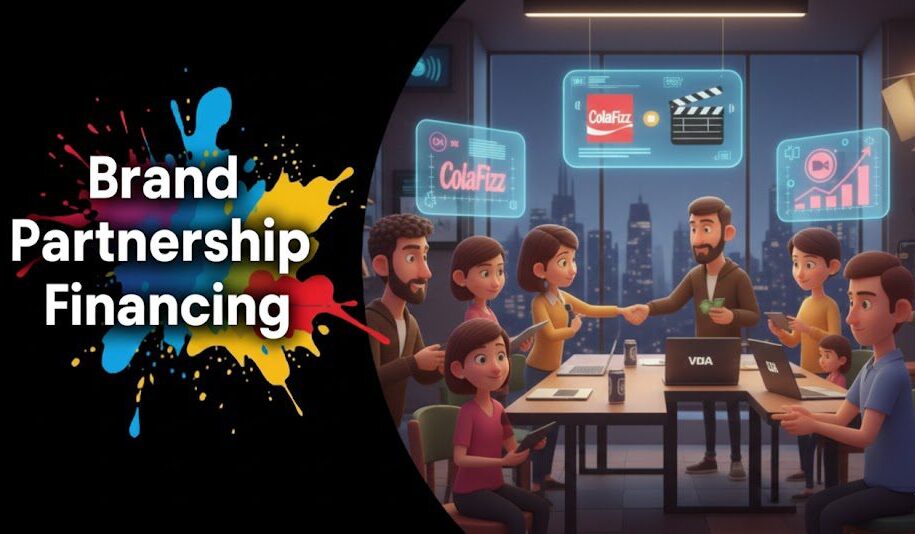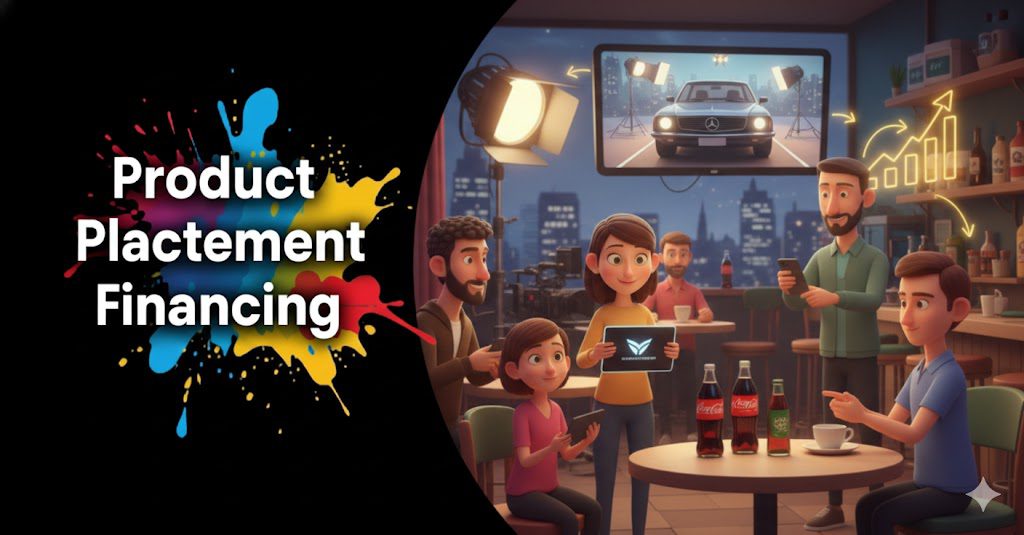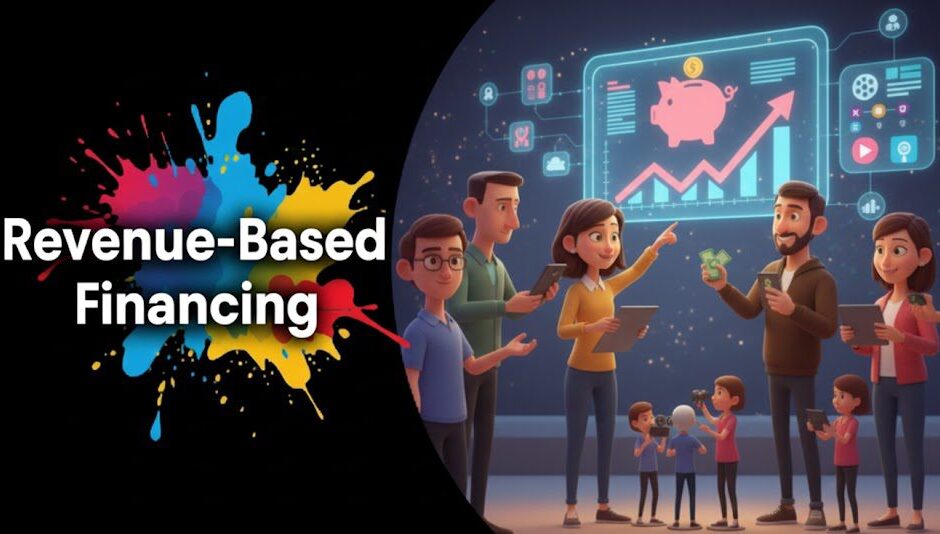Introduction
In the intricate world of media and entertainment, effective content rights management is the cornerstone of a successful licensing strategy. It’s not just about creating great content; it’s about strategically controlling and leveraging how, where, when, and by whom that content is exploited to maximize its value and reach. For rights managers, content acquirers, sellers, and industry strategists, a deep understanding of territories, licensing windows, exclusivity, and platform-specific rights (like SVOD vs AVOD rights) is absolutely crucial. This guide will delve into the complexities of content rights management, helping you navigate the landscape of film distribution rights, TV series licensing windows, and the ever-evolving world of digital content rights. Let’s unlock the secrets to truly mastering your content’s potential.
Table of content
- Introduction
- Key-Takeaways
- What is Content Rights Management and Why is it Vital?
- Decoding Territorial Rights in Media Licensing
- The Strategic Role of Licensing Windows
- Exclusivity vs. Non-Exclusivity: Making the Right Choice
- Navigating Platform Rights: SVOD, AVOD, TVOD, Linear TV, and Beyond
- The Unique Challenges of Digital Content Rights Management
- Tools and Technologies for Effective Rights Management
- Conclusion
- FAQs
Key Takeaways
| Rights Aspect | Core Insight | |
|---|---|---|
| Content Rights Management Defined | The strategic administration and exploitation of intellectual property rights associated with media content to maximize value and control distribution. | |
| Territorial Rights | Defining specific geographic regions for content exploitation allows for targeted monetization and market-specific strategies. | |
| Licensing Windows | Sequencing releases across different platforms (theatrical, home video, TV, VOD) over time to optimize revenue at each stage. | |
| Exclusivity | Granting sole rights for a specific period/territory/platform can command premium fees but limits other opportunities. Non-exclusive rights offer broader reach. | |
| Platform Rights (SVOD, AVOD, etc.) | Specific permissions for different types of distribution platforms (e.g., subscription, ad-supported, transactional VOD, linear TV). | |
| Strategic Importance | Effective rights management prevents conflicts, ensures compliance, and unlocks multiple revenue streams from a single piece of content. | |
| Further Learning | For a comprehensive overview, explore our Definitive Guide to Content Licensing. | |
Need to Optimize Your Film or TV Licensing Strategy?

What is Content Rights Management and Why is it Vital?
At its core, content rights management refers to the systematic process of administering, tracking, and strategically exploiting the various intellectual property rights associated with a piece of media content – be it a film, TV series, documentary, or game. It’s about meticulously controlling who can use your content, where they can use it (territorial rights media), when they can use it (TV series licensing windows), for how long, and on what platforms. Why is this so vital? Because effective content rights management is the key to unlocking the full financial potential of creative assets. It prevents unauthorized use, ensures compliance with licensing agreements, minimizes conflicts between different licensees, and allows rights holders to carve out multiple, often overlapping, revenue streams from a single production. In today’s global and multi-platform media environment, robust rights management isn’t just good practice; it’s essential for survival and success.
The Core Objectives of Content Rights Management:
The primary goals of a strong content rights management strategy include:
- Maximizing Revenue: By strategically licensing different rights (e.g., theatrical, SVOD, TV) across various territories and windows, rights holders can generate multiple income streams.
- Protecting Intellectual Property: Preventing piracy, unauthorized use, and ensuring that usage complies with contractual terms.
- Controlling Distribution: Managing how and where content is made available to maintain brand integrity and meet strategic objectives.
- Ensuring Compliance: Tracking all license agreements to ensure both licensor and licensee adhere to their obligations.
- Identifying New Opportunities: By having a clear overview of available rights (“avails”), rights holders can proactively identify new licensing prospects.
Without diligent management, valuable film distribution rights or other media rights can be underutilized or even lost.
Who is Responsible for Content Rights Management?
Responsibility can lie with various entities depending on the situation:
- Producers/Production Companies: Often the initial rights holders who manage rights for their own productions.
- Distributors/Sales Agents: Companies that acquire distribution rights from producers and then manage the sub-licensing of these rights to exhibitors and platforms worldwide. They are experts in content rights management.
- Broadcasters/Platforms: While primarily licensees, they also need to manage the rights they’ve acquired, ensuring they don’t exceed the licensed terms.
- Dedicated Rights Management Teams: Larger media organizations often have specialized departments focused solely on managing their vast content catalogs and associated rights.
Regardless of who is responsible, a meticulous and organized approach is crucial.
| Aspect of CRM | Importance | Example |
|---|---|---|
| Revenue Maximization | Unlocks full financial potential of content. | Licensing a film for theatrical release in Territory A, then SVOD in Territory B, then TV in Territory C. |
| IP Protection | Prevents unauthorized use and piracy. | Tracking usage and enforcing territorial restrictions. |
| Compliance | Ensures adherence to legal agreements. | Monitoring that a licensee doesn’t broadcast content outside the agreed license term. |
Decoding Territorial Rights in Media Licensing
One of the fundamental pillars of content rights management is the concept of territorial rights media. This refers to the specific geographic area(s) in which a licensee is permitted to distribute, exhibit, or otherwise exploit a piece of content. Rarely is content licensed on a “worldwide” basis in a single deal, especially for exclusive rights. Instead, rights holders strategically divide the globe into various territories to maximize revenue and cater to local market conditions. Understanding how these territories are defined, negotiated, and managed is essential for both sellers looking to optimize their global sales strategy and buyers seeking to secure rights for their target markets.
How are territories defined in licensing agreements?
Territories can be defined in various ways in a content licensing agreement:
- By Individual Country: E.g., “France,” “Japan,” “Brazil.”
- By Groups of Countries: E.g., “USA and Canada,” “UK and Ireland,” “German-speaking Europe” (Germany, Austria, Switzerland), “Latin America” (often excluding Brazil due to language), “MENA” (Middle East and North Africa).
- By Language: E.g., “French-speaking worldwide” (though this needs careful definition to avoid overlap with territory-specific deals).
- Broad Regional Definitions: E.g., “Europe,” “Asia.” These broader terms often require further itemization of included/excluded countries to avoid ambiguity.
Precision in defining the territory is vital to prevent disputes. For example, does “UK” include the Channel Islands and the Isle of Man? These details matter.
Strategies for Managing and Selling Territorial Rights
Effective management of territorial rights media involves:
- Market Valuation: Understanding the potential value of content in different territories based on audience size, economic conditions, platform landscape, and cultural affinity.
- Phased Rollout: Strategically releasing content in different territories at different times.
- Appointing Local Distributors/Agents: Partnering with experts who have strong relationships and market knowledge in specific regions.
- Rights Tracking Systems: Using databases or rights management software to keep a clear record of which rights are licensed, to whom, for which territories, and for how long. This is critical for managing film distribution rights globally.
- Geo-blocking: Implementing technical measures to ensure digital content is only accessible within the licensed territories.
| Territory Definition Type | Example | Consideration |
|---|---|---|
| Single Country | “The territory shall be Japan only.” | Clear, but requires many deals for global coverage. |
| Regional Group | “The territory shall be Scandinavia (Denmark, Norway, Sweden, Finland, Iceland).” | Efficient for culturally similar markets. |
| Language-Based | “French-speaking Africa.” | Needs careful definition to avoid clashes with country-specific deals. |
The Strategic Role of Licensing Windows
Alongside territories, TV series licensing windows and film release windows form another critical dimension of content rights management. A “window” refers to a specific period during which a particular type of right (e.g., theatrical, home video, pay TV, SVOD) is granted, often exclusively, before the content becomes available on subsequent platforms or through other models. This traditional sequencing was designed to maximize revenue at each stage of a content’s lifecycle. While the digital era has led to more flexible and sometimes overlapping windows, the underlying strategic principle of controlled, timed releases remains highly relevant for optimizing monetization.
Traditional Windowing vs. Modern Approaches
The traditional model, especially for films, followed a fairly predictable sequence:
- Theatrical Window: Exclusive release in cinemas.
- Home Entertainment Window: Release on DVD, Blu-ray, and Transactional VOD (TVOD) for rental or purchase.
- Pay TV Window (First Run): Exclusive broadcast on premium cable or satellite channels.
- Free TV/Basic Cable Window: Broadcast on ad-supported channels.
- Subscription VOD (SVOD) Window: Availability on streaming services like Netflix or Hulu.
Modern approaches, driven by streaming and changing consumer behavior, have seen these windows compress, with some films having shorter theatrical runs before hitting PVOD (Premium VOD) or SVOD. Day-and-date releases (simultaneous theatrical and VOD) also occur. For TV series, windows might involve first-run broadcast rights, followed by SVOD rights, and then potentially AVOD or syndication.
How do windows impact content valuation and exclusivity?
Windows significantly impact value:
- Early Windows Command Premiums: Rights for earlier windows (like theatrical or first-run pay TV/SVOD) are generally more valuable and command higher license fees due to the perceived freshness and exclusivity.
- Exclusivity within a Window: Granting exclusivity for a specific window (e.g., an exclusive 12-month SVOD window) increases its value to the licensee.
- Holdbacks: Agreements often include “holdbacks,” which are periods preventing the licensor from exploiting the content on other platforms or in other ways that would devalue an existing licensee’s window.
Strategic management of TV series licensing windows and film windows is crucial for maximizing overall revenue.
| Window Type | Typical Characteristics | Value Proposition |
|---|---|---|
| Theatrical | First public exhibition in cinemas. | Builds buzz, highest per-viewer revenue potential initially. |
| Home Entertainment (TVOD/Physical) | Purchase or rental for home viewing. | Captures audience wanting ownership or early home access. |
| Pay TV / First-Run SVOD | Exclusive access on premium channels/platforms. | High value due to exclusivity and premium audience. |
| Free TV / AVOD / Library SVOD | Broader access, often ad-supported or part of large libraries. | Reaches wider audience, monetizes library content. |
Want to Maximize Your Content's Global Value?

Exclusivity vs. Non-Exclusivity: Making the Right Choice
A critical decision point in any content licensing agreement revolves around exclusivity. An exclusive content license grants the licensee the sole right to exploit the specified content within a defined territory, window, and platform, meaning the licensor cannot grant similar rights to any other party during that period. Conversely, a non-exclusive license allows the licensor to grant the same or similar rights to multiple licensees simultaneously. The choice between exclusivity and non-exclusivity has significant implications for revenue potential, market reach, and the overall strategy of content rights management for both buyers and sellers.
Benefits and Drawbacks of Exclusive Licensing
For Licensees (Buyers):
- Benefits: Differentiation from competitors, ability to market content as “exclusive,” potential to attract and retain subscribers/viewers.
- Drawbacks: Higher license fees, risk if the exclusive content underperforms.
For Licensors (Sellers):
- Benefits: Ability to command premium license fees for exclusive rights.
- Drawbacks: Limits ability to license the same rights to others during the exclusive term, potentially missing out on broader reach or other revenue opportunities if the exclusive partner doesn’t maximize exploitation.
When to Opt for Non-Exclusive Licensing Deals
Non-exclusive deals can be strategically advantageous in several scenarios:
- Maximizing Reach for Library Content: Older content or titles with broad appeal might generate more overall revenue by being available on multiple non-exclusive platforms.
- Niche Content: Content with a smaller target audience might benefit from being accessible on various specialized platforms rather than tied to one.
- AVOD Strategies: Many AVOD platforms operate on a non-exclusive basis for much of their library content to offer a wide selection.
- Lower License Fees: Non-exclusive rights are typically much cheaper for licensees, making content more accessible to smaller platforms or those with limited budgets.
- Promotional Purposes: Sometimes, licensors might grant non-exclusive rights widely to build awareness for a brand or an upcoming premium release.
The decision often depends on the specific content, market conditions, and strategic goals for digital content rights.
| License Type | Key Characteristic | Typical Impact on Fee | Strategic Use |
|---|---|---|---|
| Exclusive Content License | Licensee is the sole holder of specified rights. | Higher | Premium content, platform differentiation, tentpole programming. |
| Non-Exclusive License | Licensor can grant same rights to multiple licensees. | Lower | Library content, maximizing broad reach, AVOD platforms. |
Navigating Platform Rights: SVOD, AVOD, TVOD, Linear TV, and Beyond
The evolution of media consumption has led to a diverse array of platforms, each with its own business model and audience engagement strategy. Effective content rights management requires a granular understanding of these different platform rights and how they can be licensed, often distinctly. Key platform categories include Subscription Video-on-Demand (SVOD), Advertising-supported Video-on-Demand (AVOD), Transactional Video-on-Demand (TVOD), traditional Linear TV (broadcast/cable), and others like theatrical or in-flight entertainment. Strategically licensing content across these platforms, often in different windows and with varying exclusivity, is crucial for maximizing revenue and audience reach.
Defining SVOD vs. AVOD vs. TVOD Rights
- SVOD (Subscription Video-on-Demand) Rights: Grant permission for content to be included in a library accessible to users who pay a recurring subscription fee (e.g., Netflix, Amazon Prime Video, Disney+). Deals often involve flat license fees or minimum guarantees for a defined term. Understanding SVOD vs AVOD rights is crucial.
- AVOD (Advertising-supported Video-on-Demand) Rights: Allow content to be offered for free to viewers, with revenue generated from advertisements played before, during, or after the content (e.g., Tubi, Pluto TV, YouTube free-to-watch). Licensing models often involve revenue sharing or lower flat fees.
- TVOD (Transactional Video-on-Demand) Rights: Permit content to be offered on a pay-per-view basis, either for electronic sell-through (EST – to own) or premium rental (e.g., Apple iTunes, Google Play Movies). Revenue sharing is a common model here.
Linear TV Rights: Broadcast, Cable, Satellite
Linear TV rights refer to traditional scheduled television broadcasting:
- Free-to-Air Broadcast TV: Rights for channels that are accessible to viewers without a subscription, typically funded by advertising.
- Pay TV (Cable/Satellite): Rights for channels that require a subscription to a cable or satellite service. These can be basic tier or premium tier channels.
Linear TV deals often specify the number of permitted “runs” or broadcasts within the license term and can be exclusive or non-exclusive for particular time slots or channels.
Other Emerging Platform Rights (Theatrical, In-Flight, Educational, etc.)
Beyond the major digital and broadcast platforms, various other rights contribute to the content rights management ecosystem:
- Theatrical Rights: For exhibition in cinemas, usually the first and most valuable window for feature films.
- Non-Theatrical Rights: For public performance in venues like schools, airlines (in-flight entertainment), ships, community centers, etc.
- Home Video Rights: For physical media like DVD and Blu-ray (declining but still relevant for some content).
- Mobile Rights: Sometimes carved out specifically for distribution via mobile networks or apps.
A comprehensive rights strategy considers all potential avenues for monetization.
| Platform Type | Monetization Model | Typical Licensing Model |
|---|---|---|
| SVOD | User Subscriptions | Flat Fee, Minimum Guarantee (MG) |
| AVOD | Advertising | Revenue Share, Lower Flat Fee |
| TVOD | Pay-per-view (Rent/Buy) | Revenue Share |
| Linear TV (Free) | Advertising | Flat Fee |
| Linear TV (Pay) | User Subscriptions | Flat Fee per subscriber (sometimes), or flat license fee. |
The Unique Challenges of Digital Content Rights Management
The rise of digital platforms and online distribution has revolutionized content licensing, bringing immense opportunities but also unique challenges for digital content rights management. The ease of global dissemination, the difficulty in controlling unauthorized sharing, and the need for sophisticated tracking and enforcement mechanisms make managing rights in the digital sphere particularly complex. Rights holders and distributors must be vigilant and adopt robust strategies to protect their assets and maximize revenue in this dynamic environment.
Addressing Piracy and Unauthorized Distribution
Digital piracy remains a significant threat. Effective content rights management involves:
- Watermarking & DRM (Digital Rights Management) Technologies: Implementing technical measures to prevent unauthorized copying and distribution.
- Monitoring Services: Using services that scan the internet for infringing content and issue takedown notices.
- Legal Action: Pursuing legal remedies against persistent infringers, though this can be costly and complex across jurisdictions.
- Making Content Legally Accessible: Offering content through legitimate channels at fair prices can reduce the incentive for piracy.
Geo-blocking and Territorial Enforcement Online
Since digital content can easily cross borders, enforcing territorial rights media online is crucial. This is primarily done through:
- Geo-blocking/Geo-fencing: Using IP address detection and other technologies to restrict access to content based on the user’s geographical location, ensuring that only users in licensed territories can view it.
- Contractual Obligations: Licensing agreements for digital platforms will explicitly require the licensee to implement effective geo-blocking measures.
However, VPNs and other circumvention tools present ongoing challenges.
| Digital Challenge | Mitigation Strategy | Key Consideration |
|---|---|---|
| Piracy | DRM, watermarking, monitoring, legal action. | Balancing protection with user experience. |
| Territorial Enforcement | Geo-blocking, contractual requirements. | Combating VPNs and other circumvention methods. |
| Dynamic Platform Landscape | Flexible licensing models, continuous market monitoring. | Adapting to new VOD models and viewer habits. |
Tools and Technologies for Effective Rights Management
Managing the complex web of content rights management – with its myriad territories, windows, platforms, and exclusivity clauses – can be a Herculean task without the right tools. Fortunately, specialized software and technologies have emerged to help rights holders, distributors, and even large licensees streamline their operations, improve accuracy, and make more informed strategic decisions. These tools range from comprehensive rights management systems to platforms that aid in discovery and deal tracking, like Vitrina. Leveraging such technology is becoming increasingly essential for efficient and effective management of film distribution rights and other media assets.
Key types of tools include:
- Rights Management Software: Dedicated databases and applications designed to store detailed information about all licensing deals, track availabilities (“avails”), manage expiry dates, handle royalty calculations, and generate reports.
- Content Marketplaces & Discovery Platforms: Online platforms like Vitrina that connect buyers and sellers, provide data on content availability and demand, and sometimes offer tools for initial deal negotiation or tracking.
- Digital Asset Management (DAM) Systems: Used to store, organize, and distribute the actual content files and associated metadata securely.
- Anti-Piracy Services: Technologies and services that monitor for and combat online piracy.
- Contract Management Systems: Software to manage the lifecycle of legal agreements, including version control, approval workflows, and key date reminders.
Investing in appropriate technology can significantly enhance the efficiency and effectiveness of content rights management.
Conclusion
Mastering content rights management is an ongoing, dynamic discipline crucial for anyone serious about succeeding in the global media landscape. By strategically navigating territories, licensing windows, exclusivity terms, and the nuances of various platform rights – from traditional TV to the ever-evolving digital sphere – rights holders can unlock the full economic potential of their creative assets. For buyers, a keen understanding of these elements allows for more effective content acquisition and programming strategies. The complexities are undeniable, but with careful planning, robust systems, and a clear understanding of film distribution rights, TV series licensing windows, and emerging digital content rights, the path to maximizing value becomes clearer.
As the industry continues its rapid evolution, staying informed and leveraging tools like Vitrina to gain insights and connect with partners will be more important than ever. For a comprehensive understanding of how rights management fits into the broader licensing ecosystem, please refer to our Definitive Guide to Content Licensing.
Ready to optimize your content rights strategy or find your next licensing deal? Explore Vitrina for intelligent insights and global connections in content rights management.
Frequently Asked Questions
“Avails” (short for availabilities) refers to the specific rights for a piece of content that are currently available for licensing in a particular territory, for a particular window, or on a particular platform. Effective content rights management involves accurately tracking avails to identify new licensing opportunities.
Valuation depends on many factors: the specific content, market demand in a territory, the exclusivity offered, the size and reach of the platform/channel, and comparable deals. Generally, rights for earlier windows or exclusive rights on popular platforms (like prime SVOD vs AVOD rights) command higher fees. Market intelligence and negotiation play key roles.
A “holdback” is a contractual provision where a licensor agrees not to exploit certain rights or release content on certain platforms/territories for a specified period, usually to protect the exclusivity or value of a prior licensee’s window. For example, there might be an SVOD holdback during the theatrical and initial TVOD window.
Digital platforms, especially global SVOD services, have significantly impacted TV series licensing windows. They often seek global or broad regional rights, sometimes close to or concurrent with the original broadcast. This has led to more complex windowing strategies, shorter exclusivity periods for traditional broadcasters in some cases, and a greater emphasis on “bingeable” full-season availability.































